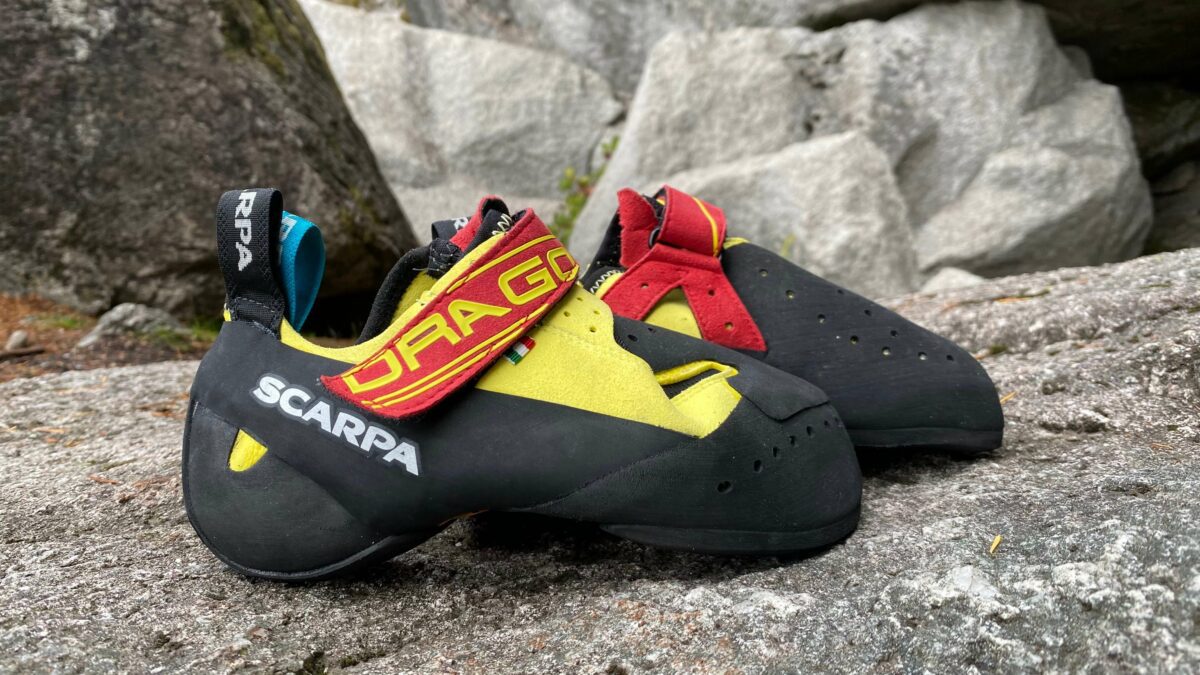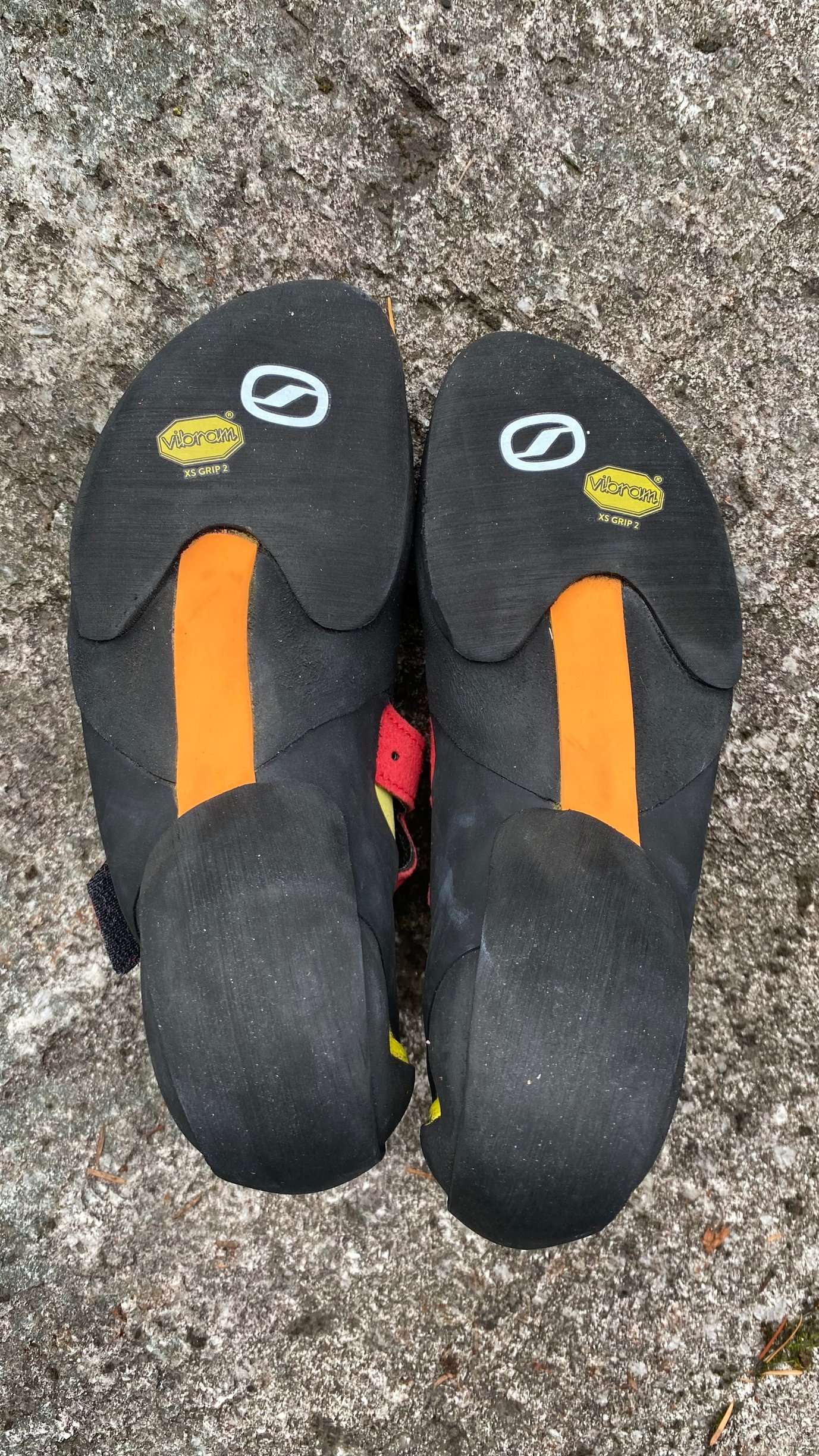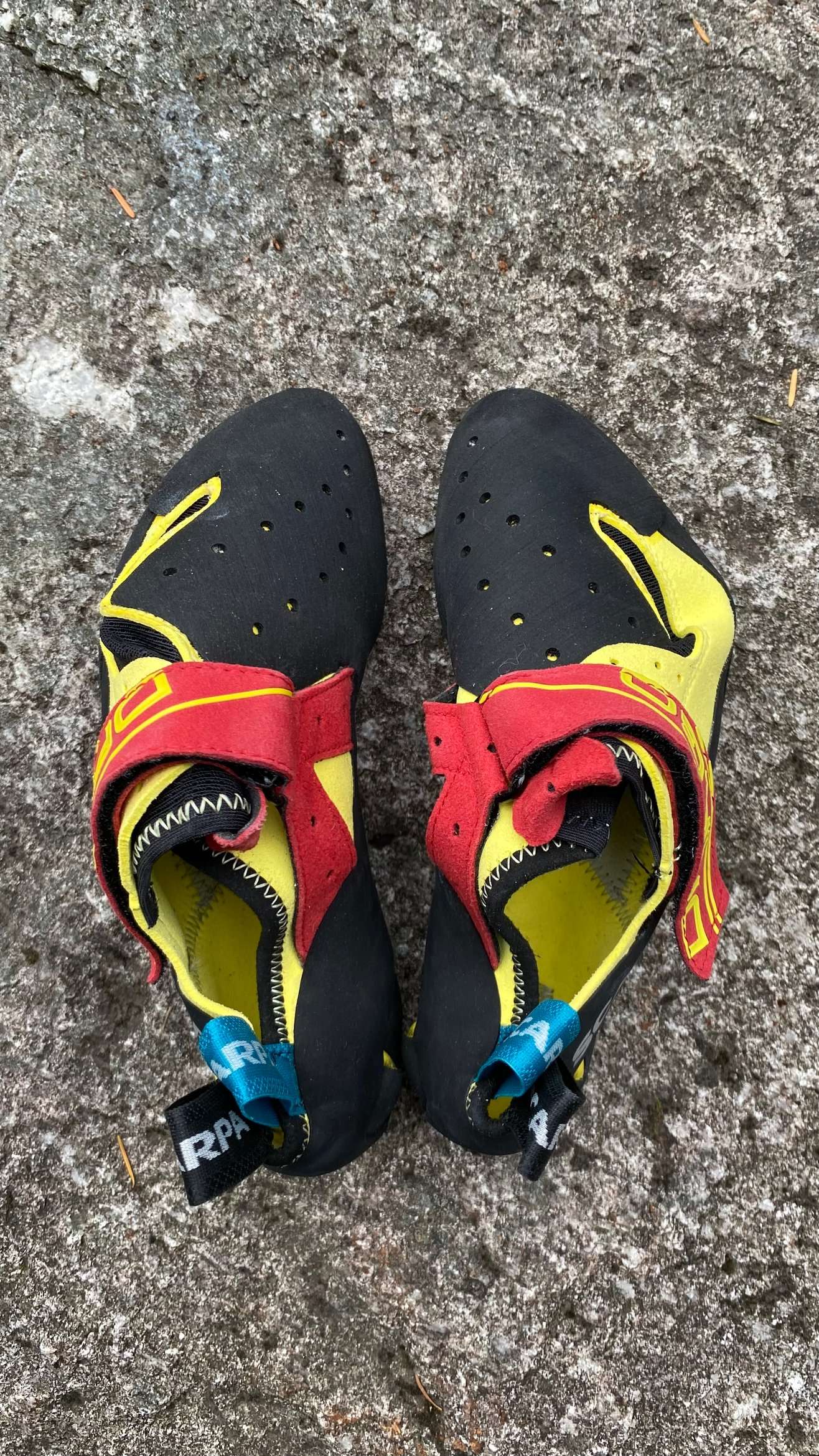The Scarpa Drago: A Review
Wickedly downturned and asymmetric, yet surprisingly comfortable, the Drago is an absolute weapon on rock and plastic

If you’re like me, the first time you pick up the Scarpa Drago, you’ll likely be stunned by its downturn and asymmetry, and immediately think something along the lines of, “Wow, I bet these shoes are going to be uncomfortable.” I got the chance to test out the Drago for the first time over the past few months on rock and plastic, and I can safely say that my first impression couldn’t have been further from the truth. The Drago is one of the most comfortable high-performance shoes I’ve ever worn, and it’s also one of the most unique.
The Drago combines wild flexibility and sensitivity with an extreme asymmetric downturn. This construction allows you to use your feet like another pair of hands – bending your foot with ease to toe in and pull on holds while still having the ability to stand on tiny edges. Where the Drago stands out perhaps over any other shoe on the market is its ability to handle both steep overhanging terrain and delicate slabs equally well. It’s no wonder so many World Cup athletes use the Drago as their shoe of choice for boulder and lead competitions.
Construction
There are a few features of the Drago worth discussing. The first is its rubberized toebox. This layer of ultra-soft rubber – called Surround Rubber Tension or SRT by Scarpa – fully envelops the front of the shoe. It acts to concentrate power directly over the toes, and it’s also amazing for toe-hooking. The SRT hugs the front of the foot, providing stability while still allowing articulation of the forefoot.
Another cool feature that contributes to this balance of power and flexibility is the PCB-Tension active rand system, an orange band of material that connects the heel to the toebox. This minimalist tensioning system helps lock in the shoe’s aggressive downturn so it won’t fade over time, all while allowing the foot to still have its full range of natural, prehensile movement. The toes can bend way back for a tenuous smear or claw forward to grasp a hold like another set of hands.
Overall the Drago’s construction is lightweight with no unnecessary bulk, and although the foot is contorted into an asymmetric downturn, it feels surprisingly comfortable. The heel cup is basic and slightly stiffer than the rest of the shoe, providing reliable stability and comfort when pulling hard on heel hooks. The heel is coated in a band of sticky rubber, and has good sensitivity for marginal heel placements.
Rubber
Most shoes on the market use a half or full outsole of sticky rubber. Prioritizing sensitivity and flexibility, the Drago only uses Vibram XS Grip2 rubber on the front third of the shoe. This rubber is also arched in a horseshoe-like shape, putting rubber only where you need it. The rubber is thin, at only 3.5mm. It’s great for sensitivity, but the soft, sticky rubber does wear relatively quickly. It’s not a big concern though and it’s a trade-off well worth making, as the shoe resoles very well.
Performance
The Drago is an amazing, advanced bouldering shoe. It’s perfect for steep overhanging terrain where you can toe-in, toe hook, and heel hook with ease. It’s also incredible for slab boulders, including modern comp-style problems. The flexible midsole allows for a high degree of bend in the foot to maximize the amount of rubber-to-rock (or plastic) action. Its sensitivity allows you to read the smallest dimples or ripples on foot holds, whether edging or smearing. The Drago is now my go-to shoe for standing with confidence on slippery volumes.
The shoe shines brightest in situations where you’re required to employ multiple techniques on a single boulder. For example, a series of smears on a volume followed by a powerful toe and heel hook sequence to some high stepping on dime edges. The Drago does it all.
Where the Drago isn’t the best choice is on long edgy sport routes or crack climbs. A more supportive shoe would be a wiser choice shoe on long, technical face climbs and a shoe with a lower profile toebox would be better suited to crack climbing. That being said, the Drago is still an excellent sport climbing shoe, particularly for overhanging routes on 3D terrain and complex footholds where smeary stemming, smedging, and toe hooks are an asset.





